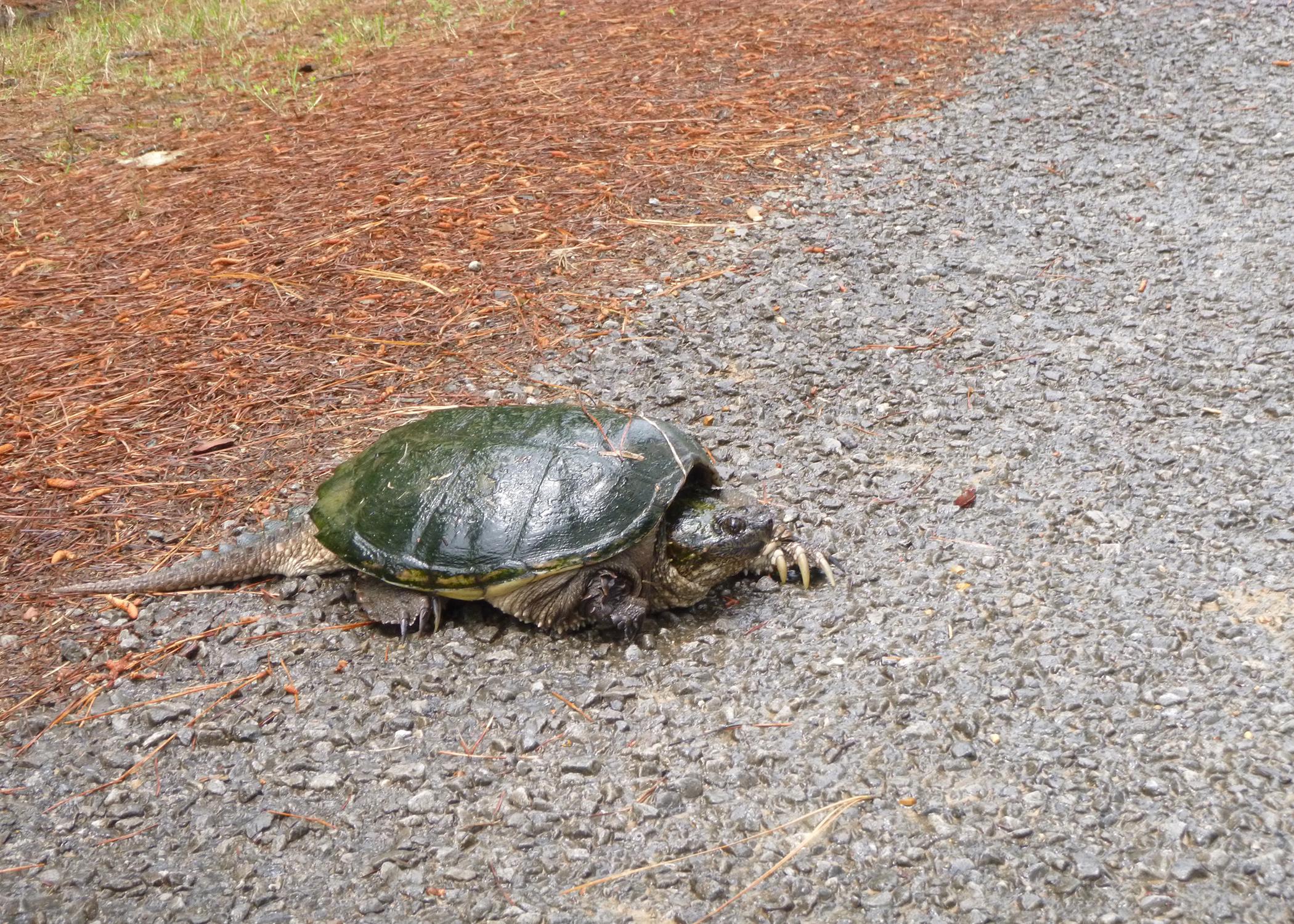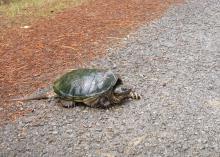Information Possibly Outdated
The information presented on this page was originally released on June 26, 2015. It may not be outdated, but please search our site for more current information. If you plan to quote or reference this information in a publication, please check with the Extension specialist or author before proceeding.
Why did the turtle cross the road?
STARKVILLE, Miss. -- Have you ever wondered why there seem to be a lot of turtles crossing the road this time of year?
The turtles you see crossing the road in spring and early summer are most often females. They are either in search of a good place to lay their eggs or returning to their home territory. Drivers should not risk a vehicle accident to avoid hitting a turtle on the road. However, unnecessary turtle deaths should be avoided.
Turtles, whether living in fresh or salt water, must lay their eggs on land. After mating, female turtles leave their watery homes and travel overland to find soft soil or dry sand in which they can dig holes to deposit their eggs. Once the eggs are laid and covered up to blend in with the surrounding area, female turtles return to the water and leave the eggs on their own.
Turtles are reptiles, as are lizards, alligators and snakes. In addition to laying eggs, they are cold-blooded and have scaly skin like other reptiles. Turtles also have hard shells, which are actually made of modified rib and back bones that are fused together. Unlike cartoon turtles, a real turtle cannot come out of its shell!
Turtles are specialized for living in various habitats in Mississippi and around the world. Some species are small enough to fit in the palm of your hand, while others are big enough to cover the bottom of a pickup truck bed.
The term “turtle” most often refers to those animals that spend most of their life in water. Freshwater turtles have webbed feet for swimming and a flatter shell that helps them slip through the water, which is why they are often known as “sliders.” Sea turtles are specially adapted reptiles with long flippers, rather than legs and feet, for life in the ocean.
“Turtle” is often used in our country to describe any reptile with a shell on its back. Not all members of the turtle group are aquatic or water dwelling. In fact, turtles that are adapted for life on the land would drown if placed in the water by a well-intentioned but ill-informed rescuer. For example, box turtles are land animals with a domed back, stumpy legs, rounded feet and a special shell that closes to provide protection from attackers. They spend their entire lives on land.
Like the box turtle, tortoises are land dwellers. They often prefer hot, dry habitats and can escape the sun’s heat by burrowing underground. In south Mississippi, the gopher tortoise lives in sandy soil typical of the longleaf pine savannah ecosystem.
Because much of the state’s aquatic habitats and native grasslands have been lost or destroyed, there are several species of turtles that are in need of special protection. These include the gopher tortoise, black-knobbed map turtle and ringed map turtle, as well as five species of sea turtle found in the Gulf of Mexico. Turtles around the world are facing similar threats. These quiet animals serve important roles in their native ecosystems and cause few problems to humans. They deserve conservation and courtesy when encountered, especially when they are simply crossing the road.

Editor’s Note: Extension Outdoors is a column authored by several different experts in the Mississippi State University Extension Service.




